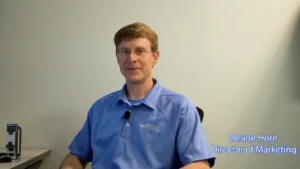IntelliFinishing: Flex 1 and Flex 2 Offer Powerful, Flexible Finishing Options
Outdated Finishing Systems
For the automatic finishing process in manufacturing, it’s no longer necessary to separate parts so that each must have its own conveyorized system. Recent and rapid technological advancements make it possible to finish parts of wildly differing sizes and processes simultaneously with each part process progression uniquely tailored to that part’s optimal process needs—all on one conveyor system.
Sound too good to be true? IntelliFinishing’s Flex 1 empowers manufacturers to do just that. Even more, Flex 2 offers easy to assemble and reassemble structural and modular process equipment so that expanding a system or altering process steps is much simpler and quicker compared to welded-together support structures on chain-based automatic finishing systems.
A Two-Pronged Approach to Flexibility
IntelliFinishing offers two types of system flexibility, aptly named “Flex 1” and “Flex 2”. Depending on needs, manufacturers can take advantage of one or both processes.
IntelliFinishing’s Flex 1 is ideal for manufacturers wanting to paint many varied parts on a single automated system. Flex 1 is built on the idea of allowing each part or part type to flow through the system based on its unique and modifiable finish recipe. Recipes can be picked and modified at the load HMI, or they can be pre-scribed by ERP delivered order processing instructions.
For example, pre-finish options might include transporting some items into an in-line shot blast while other items loop around the blast. Heavy and thick parts may process through the shot blast longer for a more thorough treatment, while lighter weight gauge material would speed through the blast so that items are not damaged or dislodged.
The wash process also allows for many options. Unlike many legacy chain systems that spray continuously, with an IntelliFinishing system, each stage of the wash is only activated when products are present, saving a great deal of operational cost commonly attributed to the wash process. Other wash options could include skipping the wash altogether via a loop track of conveyor, activating or deactivating various stages based on ideal pre-treatment preferences, or even changing the water pressure for relatively clean or lighter weight products versus applying heavy pressure for heavier, dirtier, or rustier products.
Post wash, based on part ideality, there are dry off oven options, masking and other processes which include quality control station options, and of course, finish stage options. In addition, with an IntelliFinishing system, powder coating AND liquid painting both can be an option—this is nearly impossible with traditional systems. And of course, a key part of any finish recipe is for the part to arrive at the right paint booth to be finished with the correct finish color and formula.
Perhaps the least forgiving area in any traditional automatic paint system is at the final cure step. Customarily, systems are based on a most common part approach, but this leaves many parts under- or over-cured (or consequently consigned to some other finish system). IntelliFinishing systems commonly feature multi-lane ovens to boost throughput and allow diverse curing times. Faster curing parts can zoom past their slower-curing counterparts without affecting any other processes prior or subsequent to the cure step. Additionally, carriers in non-process sections of the system can reach speeds of 25 to even 60 ft/min, allowing for higher total throughput, with VFDs that enable items to ramp up and down in speed without the common problem of excessive part swing that is prevalent with monorail or power and free systems.
Flex 2, however, refers to a somewhat bigger picture than that of Flex 1, providing an entirely new set of exclusive customizable options. Most conventional chain systems are nearly immovable, often built as one welded unit onsite. IntelliFinishing’s Flex 2 is a modular design which allows organizations to better anticipate the possibility of future system expansion, changes in process, or other facility reorganization. With Flex 2, additional processes or applications can be installed much more quickly as production level needs increase or processes change. In addition, Flex 2 offers a more holistic finishing process with a significantly reduced footprint. In fact, some of our large parts manufacturing customers have seen reductions in floorspace of at least 43% due to our systems’ ability to offer deadhead reverse direction turns and large part shuttle options.
Customize and Adjust on the Fly
Built in flexibility is priority one at IntelliFinishing. The smart controls computer panel puts flexible power at each user’s fingertips. Need to make a change to the recipe on the fly? Spot a part that needs longer oven time to cure? A longer wash cycle? No wash cycle at all? Smart controls allow the rest of the system to continue at full speed even if one section requires modifications. That’s true efficiency that conventional chain conveyors simply can’t match.
The Advantages of Going Chain-less
Opting for no chain may seem unconventional, but giving up the chain empowers more efficient processes. Chainless conveying eliminates the need for drives and take-ups, enables the system to reverse its conveyor, reduces the mess of lubricant and greasy dust dripping onto parts being finished, increases modular design capabilities, and so much more. Our customers even report a huge reduction in noise footprint as well, since we don’t use dogs/de-dogs or a noisy chain, offering a major decrease in maintenance, and even dramatic improvements in safety (injuries are often caused when employees try to unjam the chain!).
IntelliFinishing’s Flex 1 and Flex 2 benefits make them state-of-the-art turnkey finishing systems that deliver a wide variety of powerful options in response to today’s lean manufacturing needs.
Read more at intellifinishing.com









